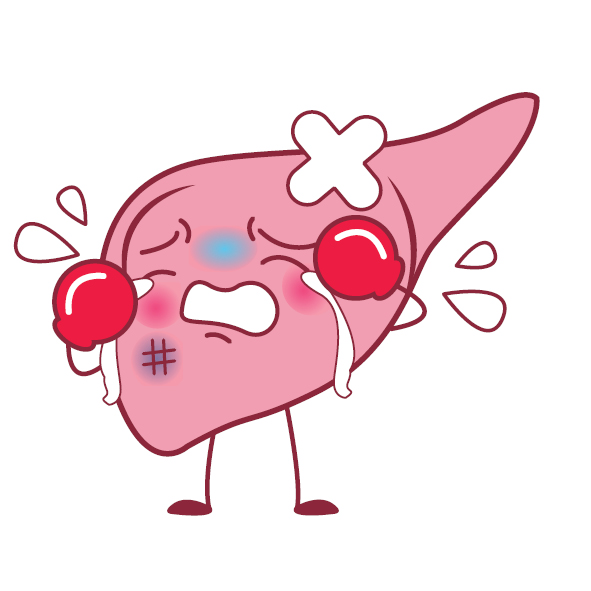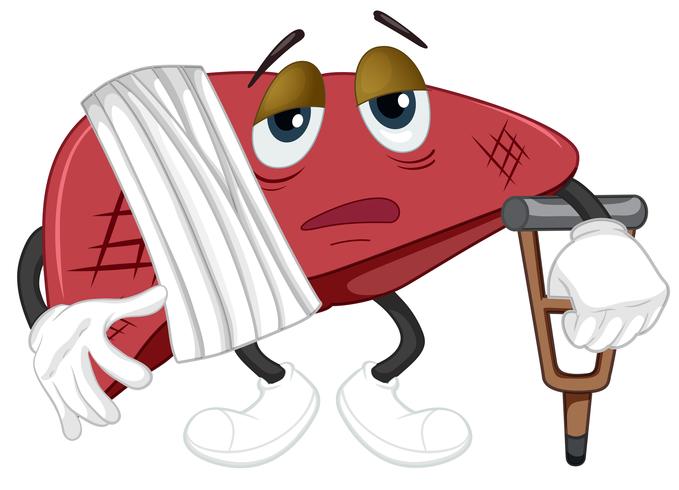The human liver is one of the most critical organs positioned under your rib cage on the right side of your abdomen, carrying out hundreds of tasks relating to waste filtering, vitamin and mineral storage, food digestion, metabolism, and energy storage.
The size of the liver is about that of a football, and it could develop problems due to factors such as alcohol abuse, virus attacks, and obesity. When there is an excess fat buildup in the liver, the excess can inflame your liver – a condition known as nonalcoholic fatty liver disease (NAFLD) – and cause problems.

Nonalcoholic Steatohepatitis (NASH) is a primary kind of NAFLD, which means that you are suffering inflammation and cell damage in your liver and fat. Some NASH symptoms include nausea, bleeding, slurred speech, and confusion.
However, the liver disease generally refers to any condition that affects the liver. And among several factors that could lead to it, it could also be inherited.
A report by the Centers for Disease Control and Prevention shows that 1.8% of adults, which is 4.5 million adults in the United States, have been diagnosed with liver disease. And because of a rising figure in obesity, some particular types of liver diseases are becoming more prevalent in the country.
Here’s a look at some of the main types of liver problems.
1. Hepatitis
Hepatitis is a liver inflammation that can make the smooth functioning of the liver difficult. When a virus causes inflammation, it is known as viral hepatitis. However, these are the common types of hepatitis you should know about.
- Hepatitis A: Usually spread through contaminated food or water. However, the symptoms may clear up without necessarily undergoing treatment, but it can take some weeks.
- Hepatitis B: Often contracted from someone else through injection needles or unprotected sex. It can either be short-term (acute) or long-term (chronic). While Hepatitis B has no cure, early treatment will help victims avoid complications such as liver cancer or other related diseases.
- Hepatitis C: It can be transmitted through blood infection. Especially by sharing needles either deliberately or accidentally or in connection with HIV. It may not show signs in its early stages but can lead to permanent liver damage after many years.
- Hepatitis D: This type is a more severe type of hepatitis that develops only in people with hepatitis B. However, it can’t be transmitted on its own.
- Hepatitis E: It is often the result of contaminated water but clears up on its own within weeks without causing further complications.
2. Drug-Induced Liver Disease
Liver problems can be caused by exposing it to harmful drugs and supplements. However, damage can be halted and reversed once the drug intake is stopped before it becomes chronic.

3. Fatty Liver Disease
Fatty liver diseases are usually caused by the buildup of fats in the body. It has two major types, alcoholic and nonalcoholic fatty liver diseases, and they can either manifest separately or overlap.
Alcoholic fatty liver disease is often the result of heavy alcohol consumption. However, nonalcoholic fatty liver diseases are caused by many other factors.
4. Autoimmune Conditions
These conditions involve a situation where your immune system mistakenly attacks liver cells, including autoimmune hepatitis, primary biliary cirrhosis (PBC), and primary sclerosing cholangitis.
5. Genetic Conditions
Several genetic conditions could affect your liver, including Wilson’s disease, Hemochromatosis, Alpha-1 antitrypsin deficiency, and Hyperoxaluria.
6. Cancer
Cancer can affect your liver in various forms. For instance, it could first develop in the liver, also known as Liver cancer, or it could start elsewhere and spread to the liver, also known as the secondary liver. However, hepatocellular carcinoma is the most typical type of liver cancer. And it often develops as several small cancerous spots in the liver.
Symptoms of Liver Disease
Apart from jaundice – a yellowing of the skin and the whites in your eyes – which is often caused by the difficulty in your liver to clear a substance called bilirubin; many liver disease types rarely show symptoms.
However, some signs to watch out for include the following:
- Abdominal pain
- Fatigue
- Bruising easily
- Nausea,
- Abnormal changes in urine or stool color
- Itchy skin
- Pale stool color
- Loss of appetite
- Tendency to bruise easily
- Swelling in your legs or arms
Tests
There are different forms of liver tests you’ll need to carry out to find out the state of your liver’s health, and they include:
- Alanine transaminase (ALT) test:
- Albumin and total protein test.
- Alkaline phosphatase (ALP) test
- Aspartate transaminase (AST) test.
- Gamma-glutamyltransferase (GGT) test.
- L-lactate dehydrogenase (LD) test.
- Prothrombin time (PT) test
- Gamma-glutamyltransferase (GGT) test
- Bilirubin test.
How to Prepare for a Liver Function Test
Book an appointment with your doctor if you notice any persistent symptoms. And if you have taken medicines or herbal supplements, tell your doctor about it. You may be advised not to eat the night before your test.


